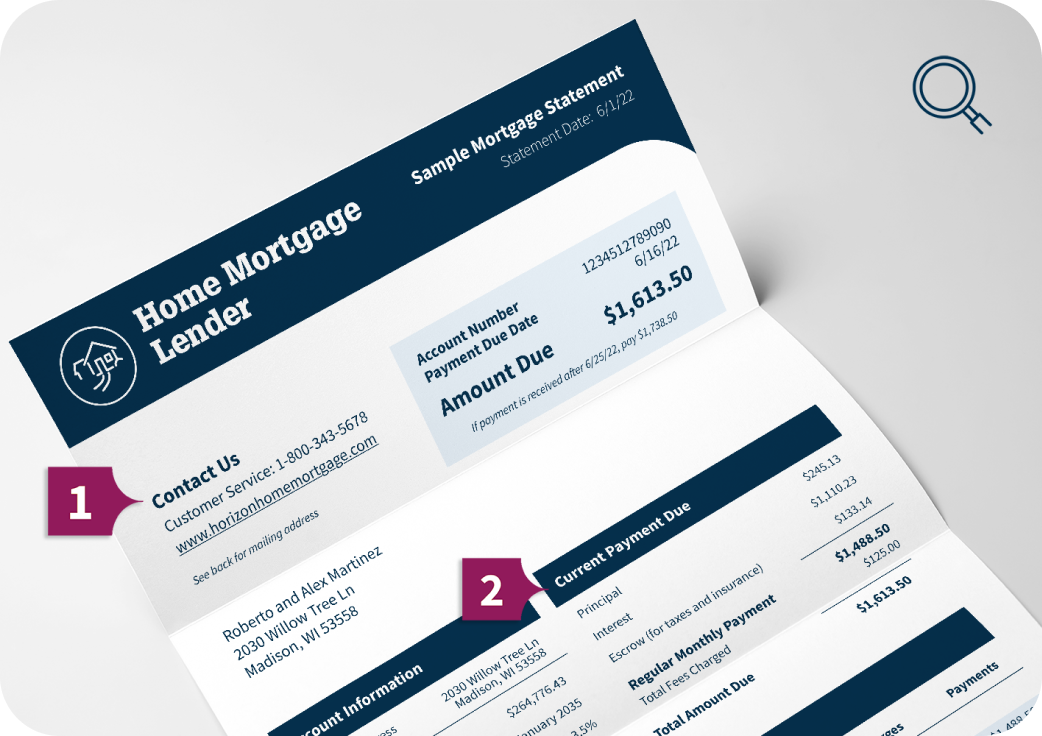Understanding Your Monthly Mortgage Statement

View Sample Mortgage Statement
Review your mortgage statement each month so you can spot any changes and stay in-the-know about your loan.
What’s included in your monthly mortgage statement?
- Contact information for your mortgage servicer — the company that receives your mortgage payments each month
- Payment breakdown, including the amount due and interest charged
- Account overview, including outstanding principal, interest rate, and cost of paying off the loan early
- Past payment overview, outlining what you paid last month and in total for the year
Learn more about what you should focus on in each section
Section 1 – Your mortgage servicer
This is the company that sends the statement, processes your payments, keeps track of principal and interest paid, and manages your escrow account (if you have one). This is a good place to start if you have questions or concerns. Their contact information will be at the top left of your statement. Note your account number, which should also be on your statement, before contacting them.
Section 2 – Explanation of amount due
This section details how your monthly loan payment is broken down. Typically, your payment includes three categories:
- Principal — the amount you originally borrowed
- Interest — the cost of the loan
- Escrow — property taxes based on the home’s value and the rates for the county or city (typically due annually or semiannually)
Homeowner tip
If you pay more than the amount due, you may reduce the amount of interest you pay over the life of the loan.
Section 3 – Prepayment penalties
Thinking of paying off your mortgage early? There may be a cost to pay off early. Whether you pay it off through refinancing, by selling your home, or by some other means, you would have agreed to this penalty fee when you closed on the loan. Be sure to check this section before you pay off your loan completely to avoid surprises.
Section 4 – Past payments
Review the dates and confirm that your last payment was credited on time. If not, contact your servicer to correct the issue.
Finally, check for errors
Look for any new charges or fees in the explanation of amount due and ensure that payment dates are accurate. If you spot any errors, call your servicer to resolve the issue.
If you must submit paperwork, be sure to use the servicer’s correct address. Chances are the address used for information requests is different than the address used for payments. You should be able to find the correct address on your statement. If not, check the servicer’s website.


 Facebook
Facebook
 X
X
 Pinterest
Pinterest
 Copy Link
Copy Link

